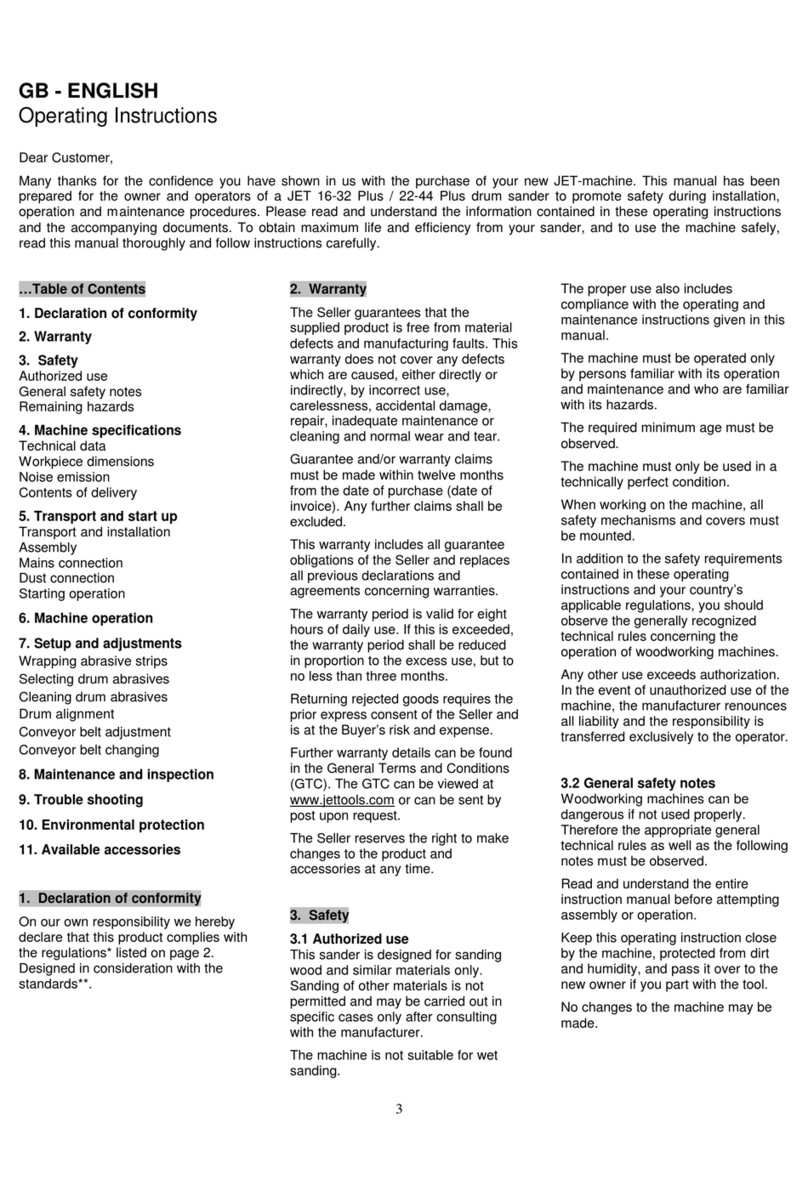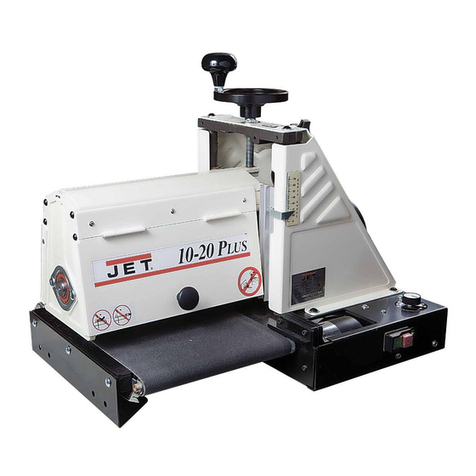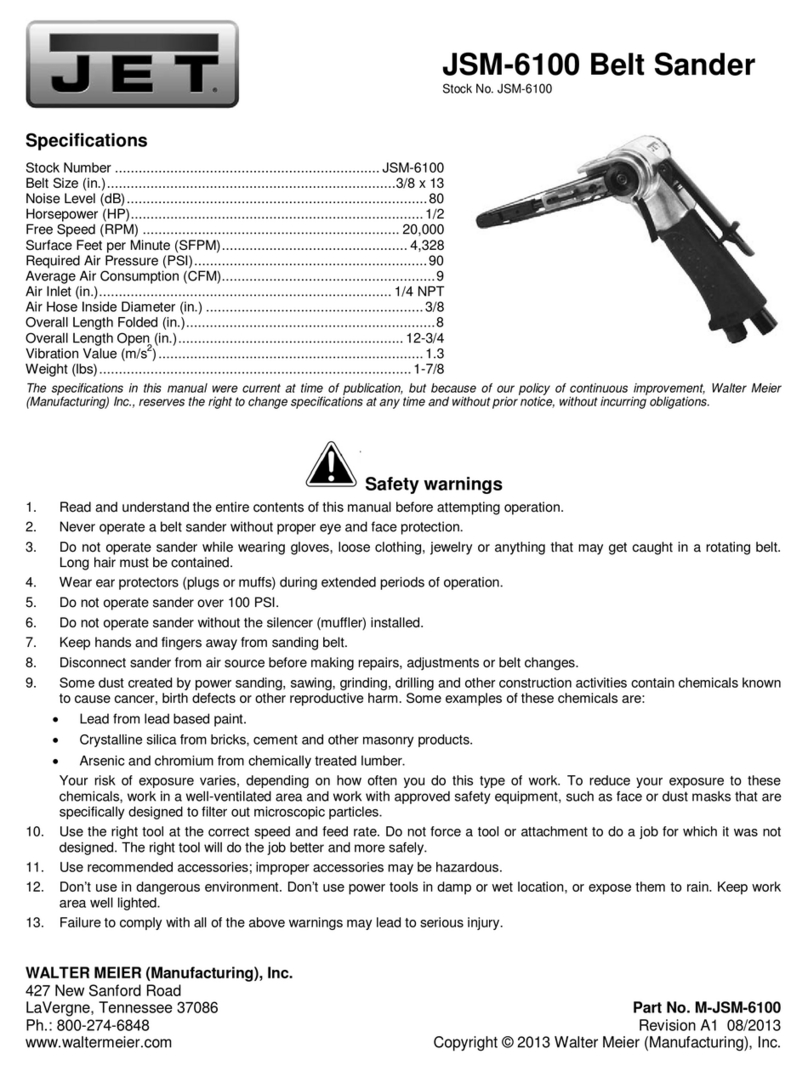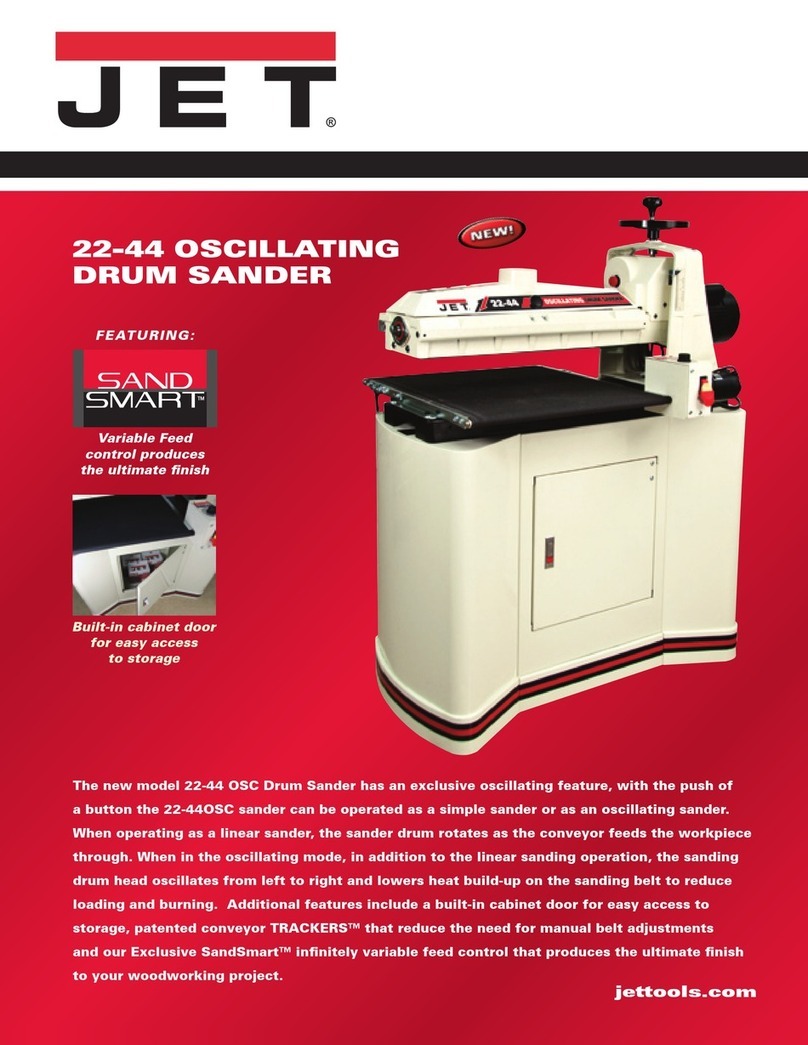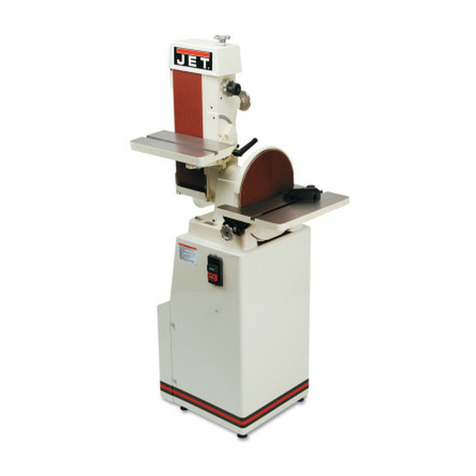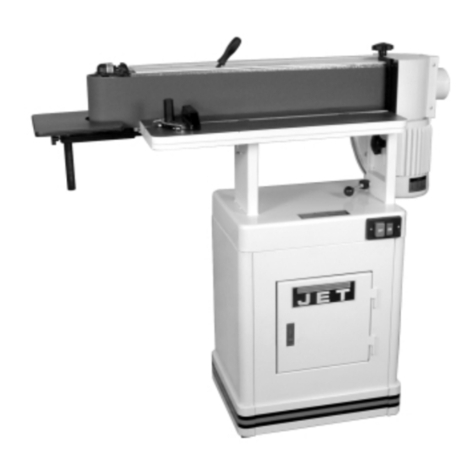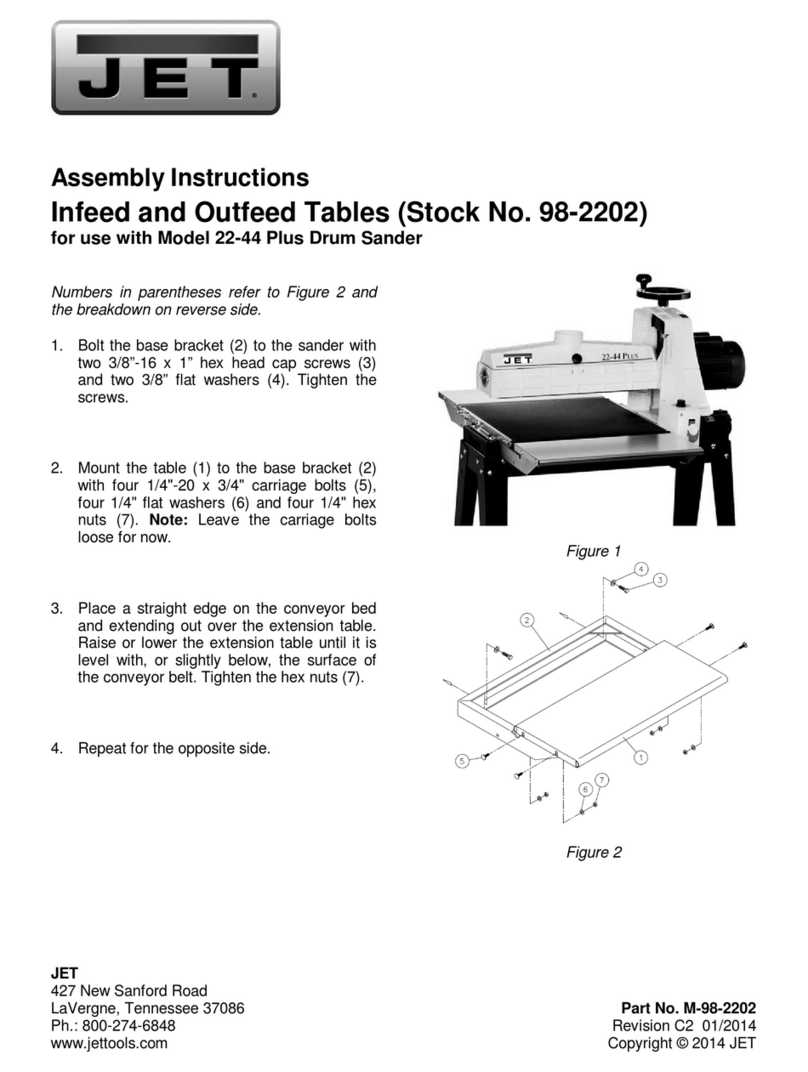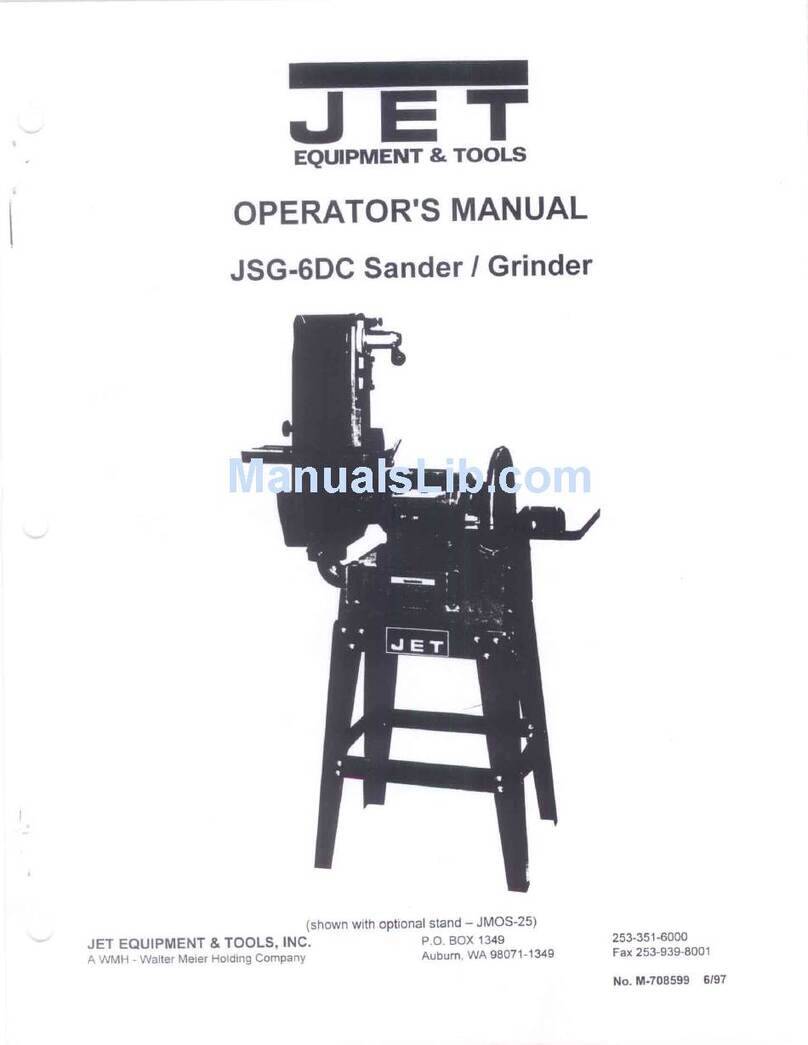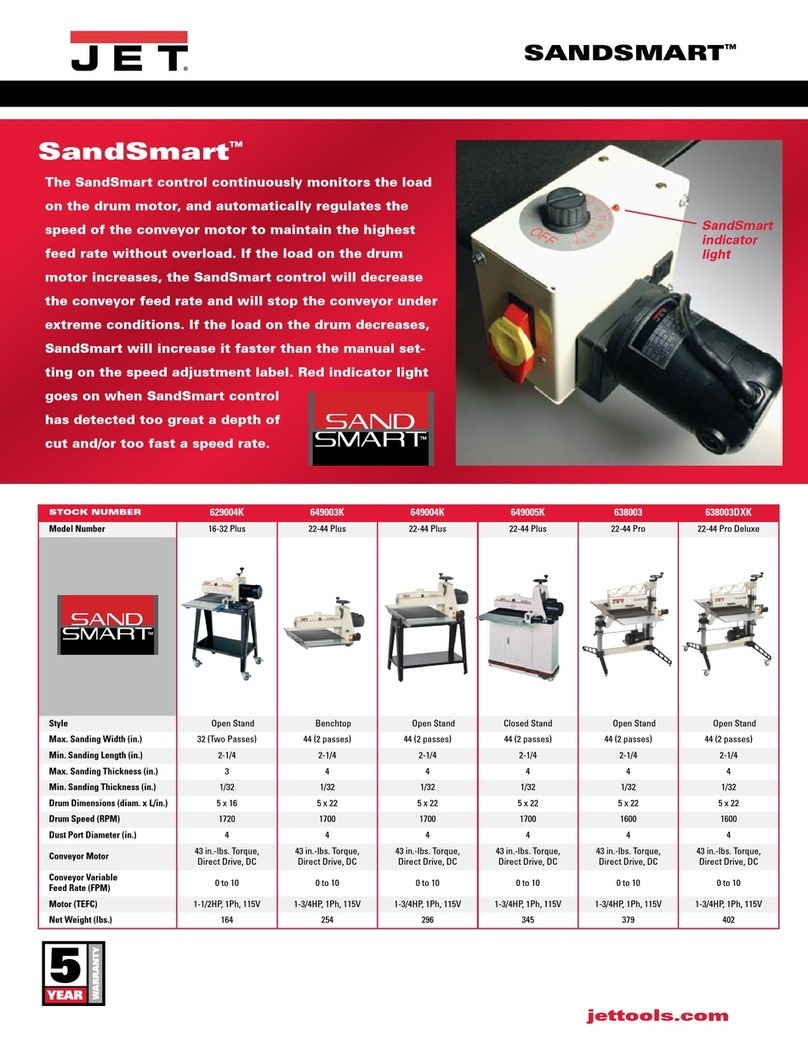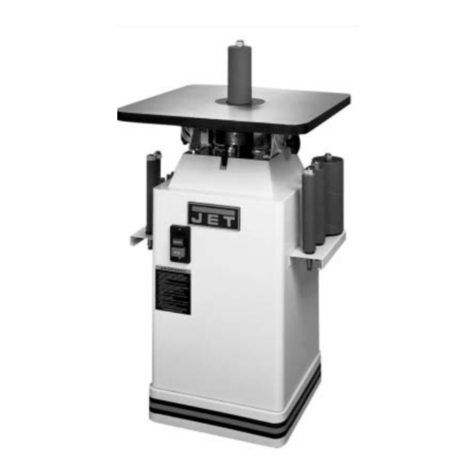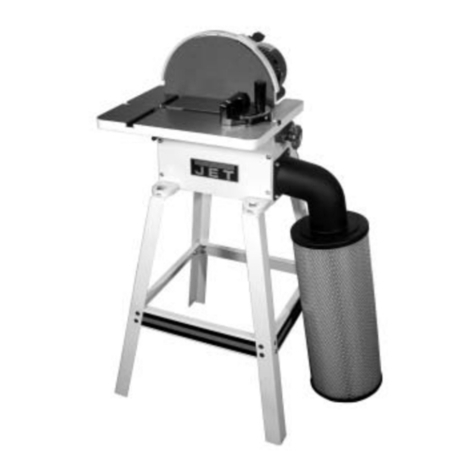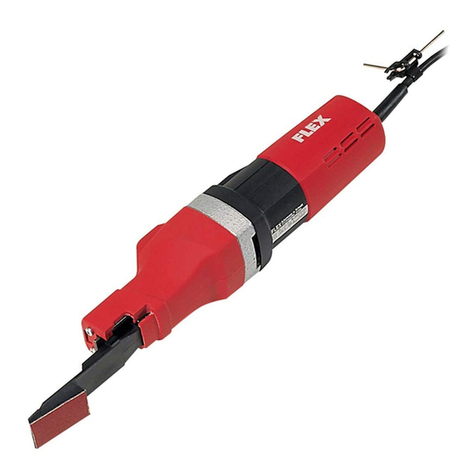
4
1.Declarationofconformity
Onourownresponsibilityweherebydeclarethatthis
productcomplieswiththeregulationslistedonpage
2.Designedinconsiderationwiththestandards.
2.Warranty
TOOLFranceSARLguaranteesthatthesupplied
productisfreefrommaterialdefectsand
manufacturingfaults.
Thiswarrantydoesnotcoveranydefectswhichare
caused,eitherdirectlyorindirectly,byincorrectuse,
carelessness,accidentaldamage,repair,inadequate
maintenanceorcleaningandnormalwearandtear.
Anywarrantydetails(i.e.warrantyperiod)canbe
foundintheGeneralTermsandConditions(GTC)that
areintegralpartofthecontract.
TheseGTCcanbeviewedatthewebsiteofyour
dealerorsenttoyouuponrequest.
TOOLFranceSARLreservestherighttomakechanges
totheproductandaccessoriesatanytime.
3.Safety
3.1Authorizeduse
Thisdrumsanderisdesignedforsandingwoodand
similarmaterialsonly.Sandingofothermaterialsis
notpermittedandmaybecarriedoutinspecificcases
onlyafterconsultingwiththemanufacturer.
Themachineisnotsuitableforwetsanding.
Theproperusealsoincludescompliancewiththe
operatingandmaintenanceinstructionsgiveninthis
manual.
Themachinemustbeoperatedonlybypersons
familiarwithitsoperationandmaintenanceandwho
arefamiliarwithitshazards.
Therequiredminimumagemustbeobserved.
Themachinemustonlybeusedinatechnically
perfectcondition.
Whenworkingonthemachine,allsafetymechanisms
andcoversmustbemounted.
Inadditiontothesafetyrequirementscontainedin
theseoperatinginstructionsandyourcountry’s
applicableregulations,youshouldobservethe
generallyrecognizedtechnicalrulesconcerningthe
operationofwoodworkingmachines.
Anyotheruseexceedsauthorization.
Intheeventofunauthorizeduseofthemachine,the
manufacturerrenouncesallliabilityandthe
responsibilityistransferredexclusivelytothe
operator.
3.2Generalsafetynotes
Woodworkingmachinescanbedangerousifnotused
properly.Thereforetheappropriategeneraltechnical
rulesaswellasthefollowingnotesmustbeobserved.
Readandunderstandtheentireinstructionmanual
beforeattemptingassemblyoroperation.
Keepthisoperatinginstructionclosebythemachine,
protectedfromdirtandhumidity,andpassitovertothe
newownerifyoupartwiththetool.
Nochangestothemachinemaybemade.
Dailyinspectthefunctionandexistenceofthesafety
appliancesbeforeyoustartthemachine.
Donotattemptoperationinthiscase,protectthe
machinebyunpluggingthepowercord.
Beforeoperatingthemachine,removetie,rings,
watches,otherjewellery,androllupsleevesabovethe
elbows.
Removealllooseclothingandconfinelonghair.
Wearsafetyshoes;neverwearleisureshoesorsandals.
Alwaysweartheapprovedworkingoutfit:
‐eyeprotection
‐expiratoryprotection
‐dustprotection
Donotwearlooseclothesandgloveswhileoperating
thismachine.
Installthemachinesothatthereissufficientspacefor
safeoperationandworkpiecehandling.
Keepworkareawelllighted.
Themachineisdesignedtooperateinclosedroomsand
mustbeboltedstableonfirmandlevelledtablesurface
oronthesuppliedcabinetstand.
Makesurethatthepowercorddoesnotimpedework
andcausepeopletotrip.
Keeptheflooraroundthemachinecleanandfreeof
scrapmaterial,oilandgrease.
Stayalert!
Giveyourworkundividedattention.
Usecommonsense.Donotoperatethemachinewhen
youaretired.
Keepanergonomicbodyposition.
Maintainabalancedstanceatalltimes.


